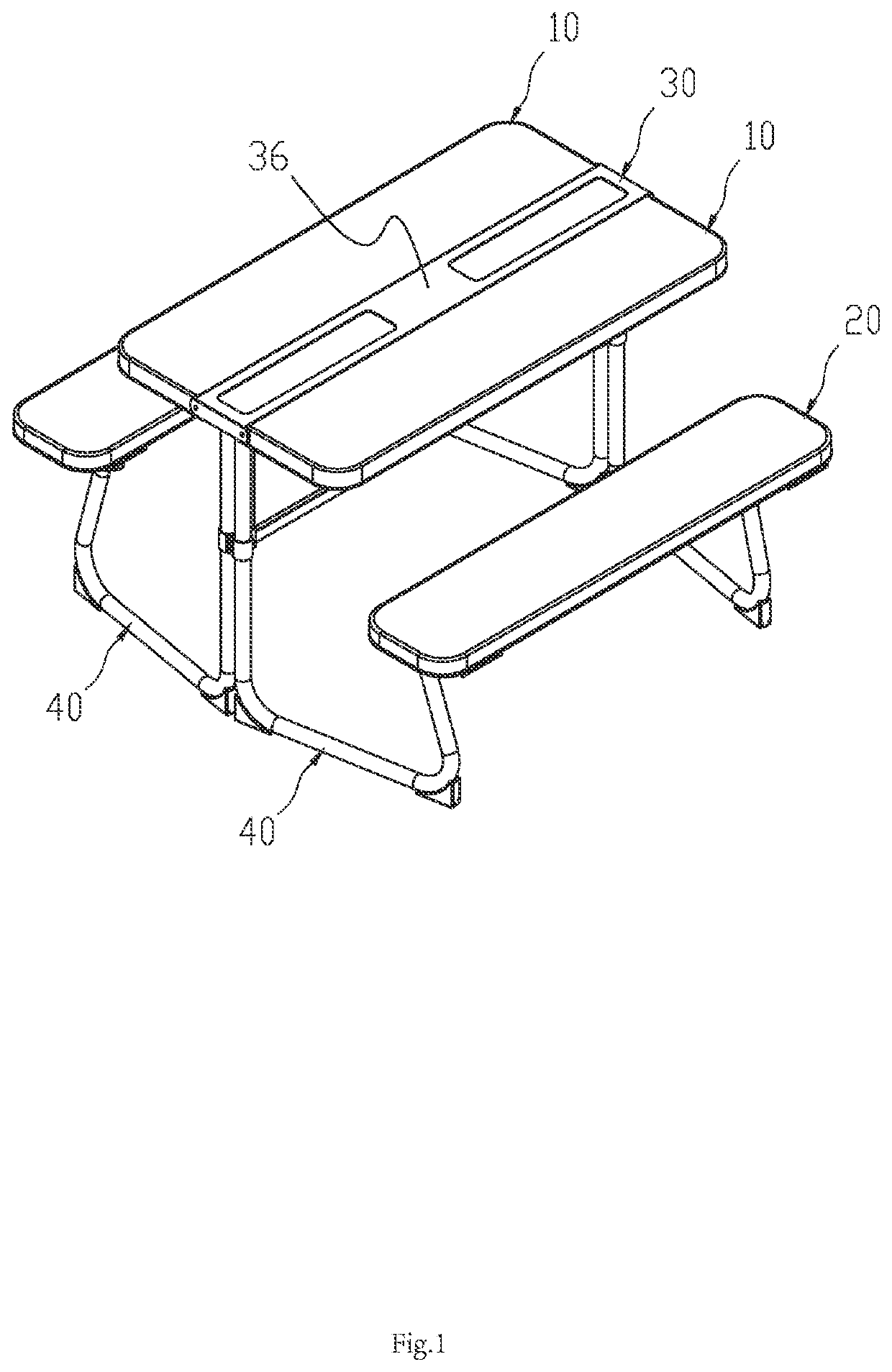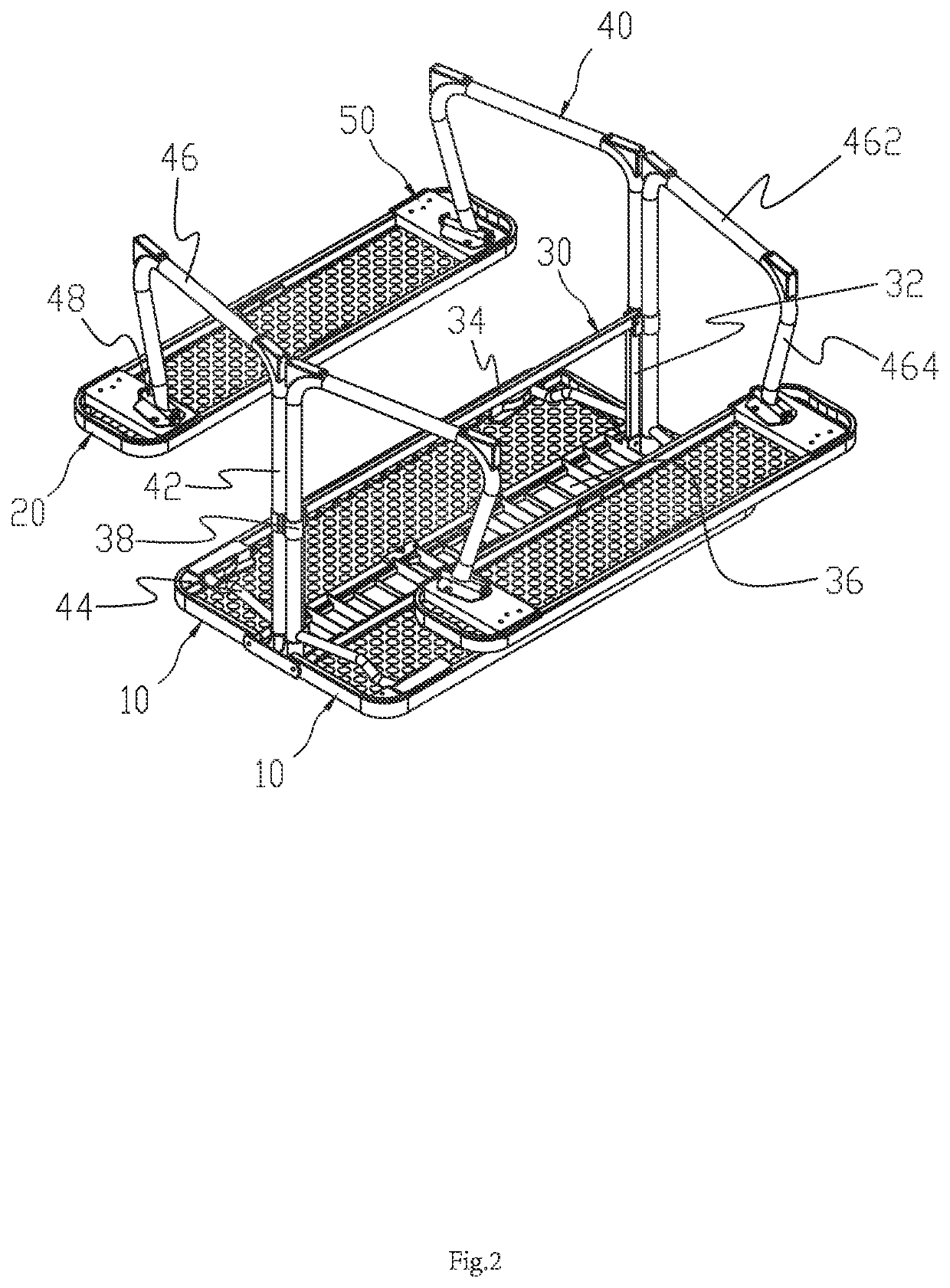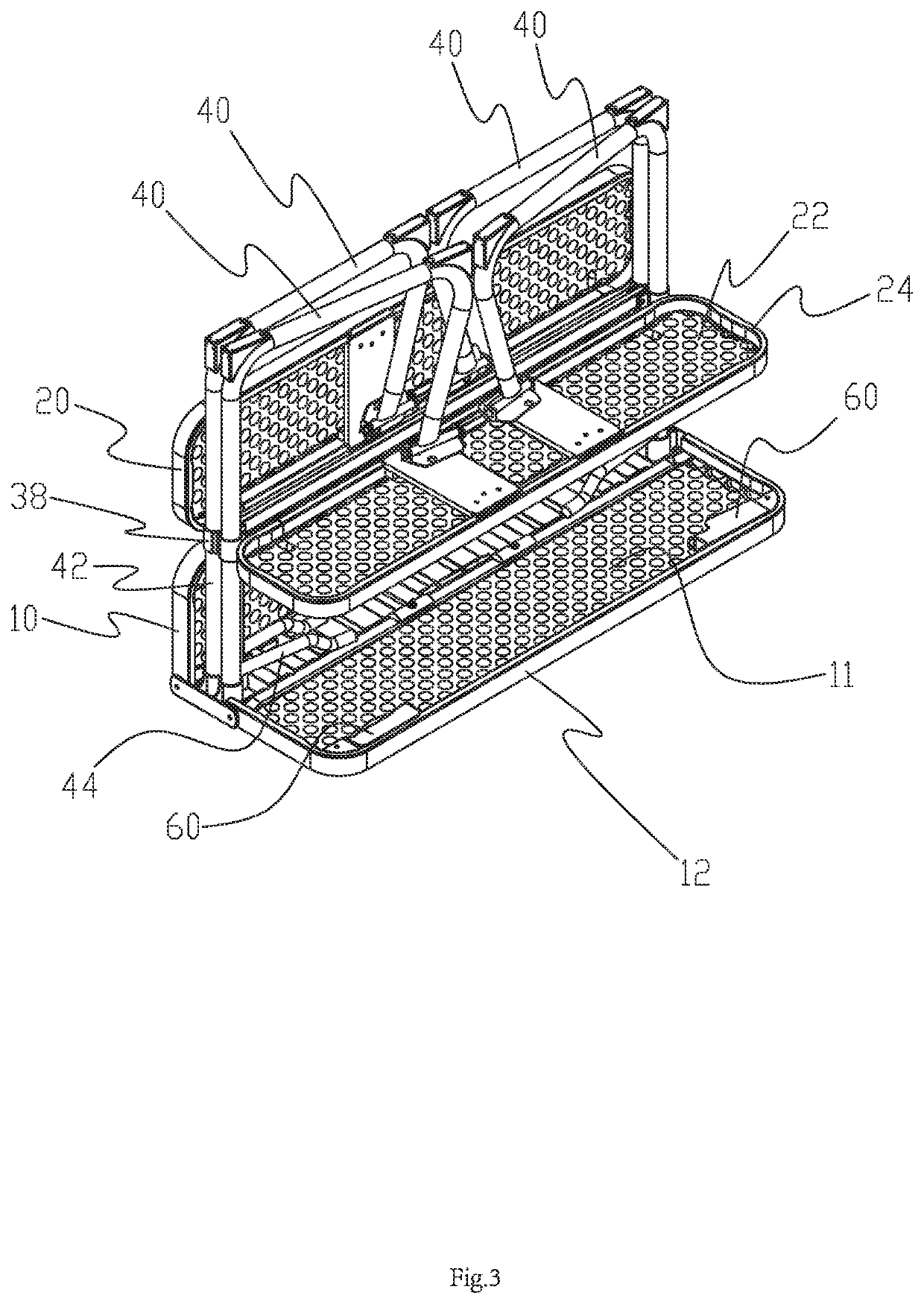Folding stool or folding table
a folding table and folding mechanism technology, applied in the field of folding tables and benches, can solve the problems of serious misalignment of the support rod, loss of support for the bench board, and inability to support the bench board, etc., and achieve the effects of stable use of the bench board, stable support and connection of the bench board
- Summary
- Abstract
- Description
- Claims
- Application Information
AI Technical Summary
Benefits of technology
Problems solved by technology
Method used
Image
Examples
embodiment 1
[0024]Referring to FIGS. 1-6, an integrated folding table and bench of the present disclosure comprises two table boards 10, two bench boards 20, and a pivot bracket 30. The two table boards 10 and two bench boards 20 are both respectively and symmetrically disposed on a left side and a right side of the pivot bracket 30, and the table boards 10 are rotatably connected to the pivot bracket 30. The pivot bracket 30 is movably connected to a table board 10 and a bench board 20 disposed on the same side by a pair of support brackets 40. Therefore, there are four support brackets 40 divided into two pairs. A first pair of support brackets 40 disposed on a left side and a second pair of support brackets 40 disposed on a right side of the pivot bracket 30 are both symmetrically disposed on a front end and a rear end of the pivot bracket 30. The support brackets 40 comprise vertical shafts 42, table board support rods 44 connected to upper ends of the vertical shafts 42, and bench board su...
embodiment 2
[0033]Referring to FIG. 7, Embodiment 2 differs from Embodiment 1 in that the limiting members 60 are U-shaped structures and are directly secured to the table frame 12 to prevent from rotation. Further, the frames 24 of the bench boards 20 comprises positioning members 70, the positioning members 70 are disposed under the seat board 22, and the positioning members 70 comprise buckle slots 72. After the support brackets 40 rotate to be opened, edges of the sliding seats 52 are snapped in the buckle slots 72. First ends of the positioning members 70 are rotatably connected to the frames 24, and springs are disposed between the positioning members 70 and the seat board 22. Second ends of the positioning members 70 are pressed to overcome elastic force of the springs, so that the first ends of the positioning members 70 are separated from the edges of the sliding seats 52.
embodiment 3
[0034]Referring to FIG. 8, Embodiment 3 differs from Embodiment 2 in that the positioning members 70 are disposed with pressing tongue pieces 74. The pressing tongue pieces 74 can facilitate the positioning members 70 to be pressed, and restrictions for the sliding seats 52 are released.
PUM
 Login to View More
Login to View More Abstract
Description
Claims
Application Information
 Login to View More
Login to View More - R&D
- Intellectual Property
- Life Sciences
- Materials
- Tech Scout
- Unparalleled Data Quality
- Higher Quality Content
- 60% Fewer Hallucinations
Browse by: Latest US Patents, China's latest patents, Technical Efficacy Thesaurus, Application Domain, Technology Topic, Popular Technical Reports.
© 2025 PatSnap. All rights reserved.Legal|Privacy policy|Modern Slavery Act Transparency Statement|Sitemap|About US| Contact US: help@patsnap.com



